Olympus M.ZUIKO 8mm f1.8 Fisheye PRO Review:
One of the reasons why the micro four thirds system is so appealing is because it has such a vast collection of excellent lenses to choose from. The previous micro four thirds lens that I reviewed was the Panasonic 42.5mm Nocticron (review here), and it was an absolutely superb short tele but this time around, I decided to try something completely different. I’ve always been fond of fisheye lenses, so this time, I decided to review the Olympus M.ZUIKO 8mm f1.8 Fisheye PRO. Being that this is part of Olympus’ PRO line, there is a lot packed into this little fisheye but at $899, there are definitely cheaper choices out there, so one has to wonder, is it worth the asking price? Read on and find out.
Olympus M.ZUIKO 8mm f1.8 Fisheye PRO Build Quality:
In terms of build quality, the 8mm f1.8 Fisheye PRO is one rugged lens. This makes sense, of course, since the 8mm fisheye is part of the PRO lineup of lenses by Olympus. The 8mm f1.8 Fisheye is built for the rigors of professional use; not much will stop it in other words. It has weather sealing in five separate locations, so it’s protected extremely well from the elements like rain, wind, and dirt. The weather sealing seems to be working because I was stuck in the rain several times while I had it, and I had absolutely no problems. The 8mm f1.8 Fisheye PRO is even freeze proof down to 14ºF (-10ºC). Furthermore, it’s made out of metal, the focus ring is very smooth, and there are no creaks or rattles of any kind. Overall, this is a quality lens, and in my opinion, you will definitely notice the difference in quality when you compare this lens with some of the cheaper alternatives out there.
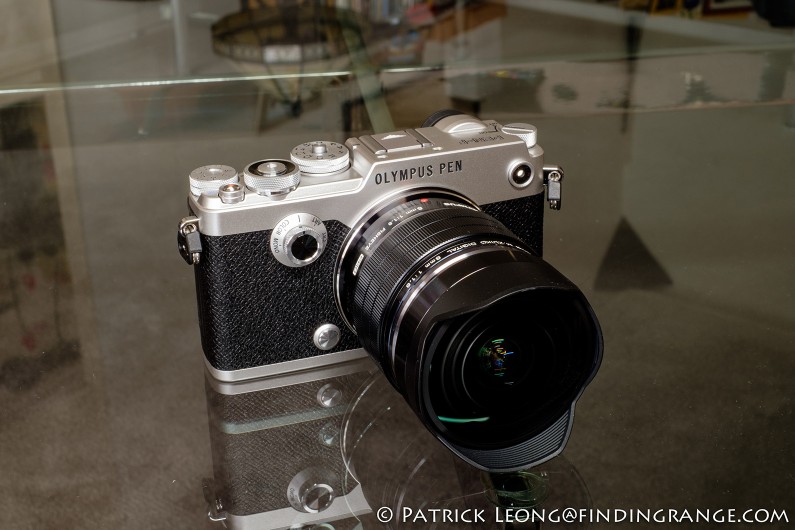
↑ Olympus M.ZUIKO 8mm f1.8 Fisheye PRO on the Pen-F.
Now, one would think that this would be a very large lens because of the angle of view and the maximum aperture speed but it isn’t that big at all. I was testing it on the Olympus Pen-F, and the combo felt very well-balanced and light. Keep in mind that when I’m talking about the size of the lens, I’m including the lens hood as well because it is permanently attached to the fisheye. Some may not like a permanently attached lens hood but to me, it’s a good thing; there is a gigantic bulging front element on this lens, and without the lens hood, there is definitely a higher chance of damaging the front element. Even with the lens hood on, I managed to accidentally touch my review copy’s front element quite a few times with my hand.
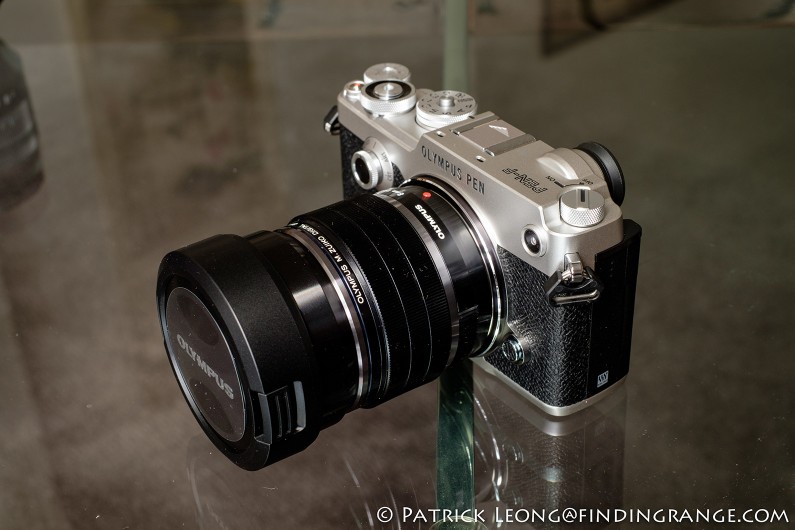
↑ The lens cap goes over the lens hood, and is what you would find on any typical fisheye lens.
As for the autofocus, I found it did very decently. For the most part, the 8mm fisheye accurately nailed the focus, and it did it very quickly. It was also quiet. I think there were maybe just a couple of shots that I had a bit of trouble locking on but overall, I have no complaints here.
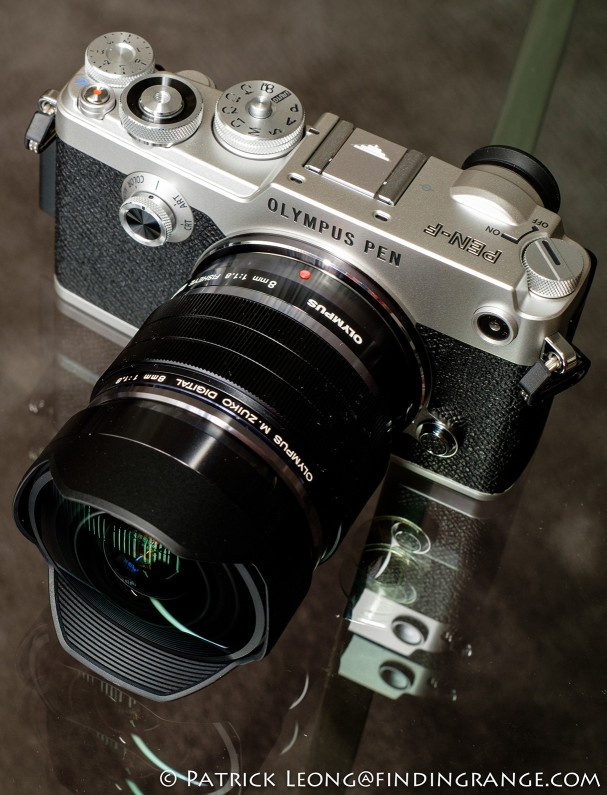
↑ Autofocus is quick and accurate. To me, the Olympus M.ZUIKO 8mm f1.8 Fisheye PRO is not so big as well considering its extreme focal length and maximum shutter speed. It balances quite nicely on the Pen-F pictured here.
Olympus M.ZUIKO 8mm f1.8 Fisheye PRO Image Quality:
In terms of image quality, I have to give Olympus a lot of credit here: Olympus not only created the first 8mm (16mm equivalent) fisheye lens with a maximum aperture speed of f1.8, they also created an incredibly impressive one as well. Giving a full 180º angle of view, the Olympus M.ZUIKO 8mm f1.8 Fisheye PRO is such a wonderful fisheye to use, and the optics are fantastic. Emphasis on fantastic. Colors are rendered absolutely beautifully, and simply pop out of the page. Photos have a realism or lifelike appeal to them. I also found this lens to be highly resistant to flare, and the contrast is also excellent.
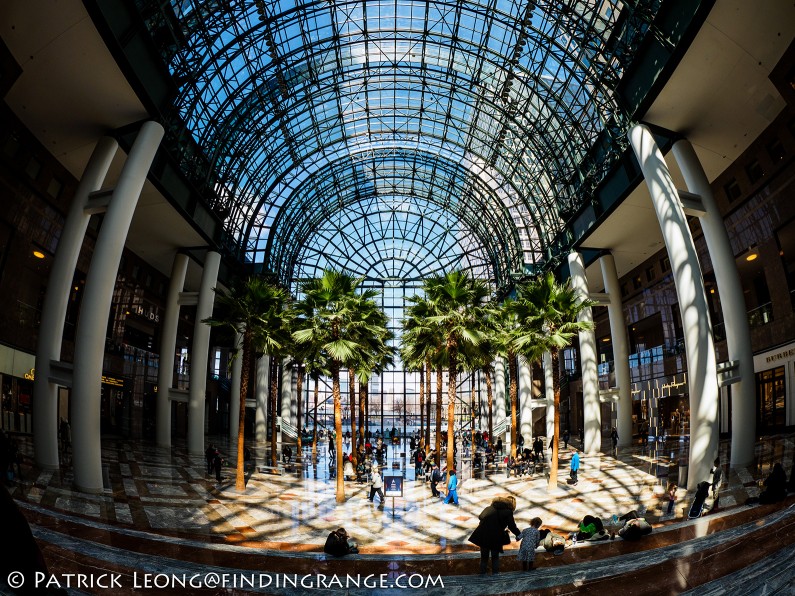
↑ This was taken at F6.3 in the Brookfield Place right across from WTC.

↑ This was taken at F5.
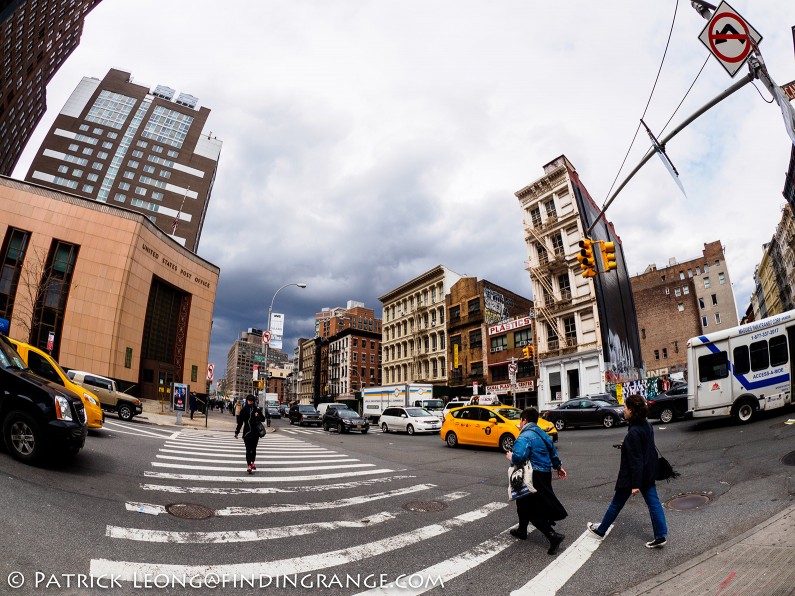
↑ Here is a photo taken at F6.3. To me, the Olympus M.ZUIKO 8mm f1.8 Fisheye is a contrasty little lens.
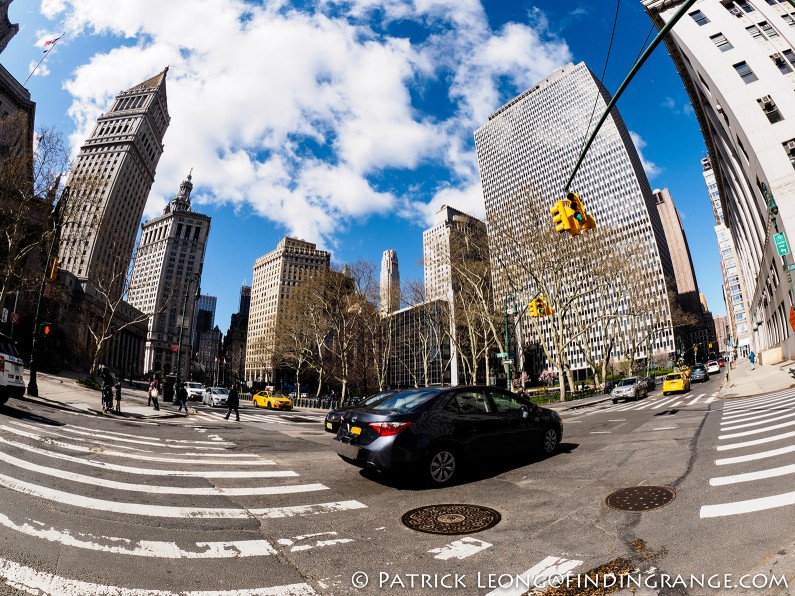
↑ This was taken at F6.3. All my photos were processed from raw files but not much needed to be done. The colors just pop from this lens.
To top it off, this is one crazy sharp lens! Even at F1.8, it is nearly tack sharp throughout the whole image. I was looking at the edges of the frame, and I was downright surprised at the sharpness. Stopping down just a bit only increases sharpness slightly but truthfully, this lens is so razor sharp throughout the aperture range that from what I see, there’s not much of a need to stop down for the sake of sharpness; I only stopped this lens down when I wanted a larger depth of field or if I wanted to get rid of the slight vignetting you get at the larger apertures. In regards to vignetting though, there’s very little at F1.8, and to me, it’s hardly noticeable in practice. The only reason I even mention it is because this is a review and I want to be thorough. If you want it to be gone completely though, just stop the lens down to F2.8.
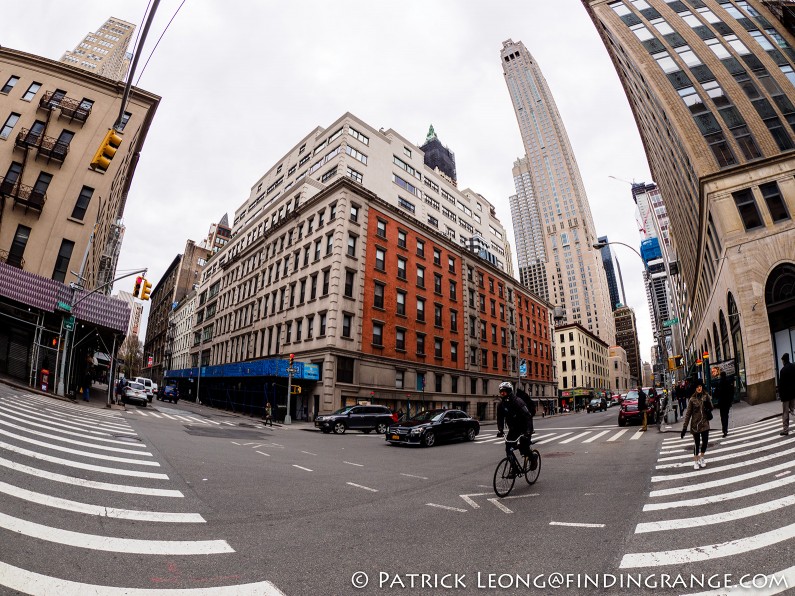
↑ This was taken at F5.6.
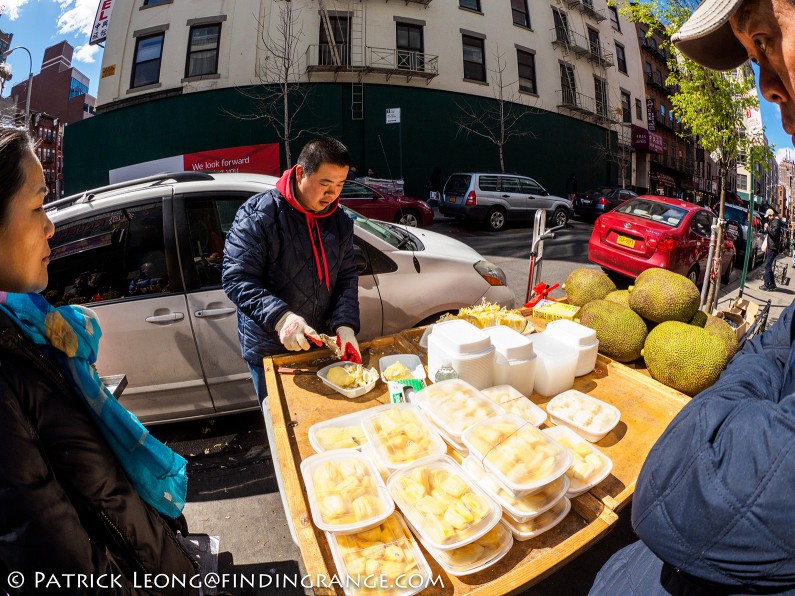
↑ This was taken at F6.3.
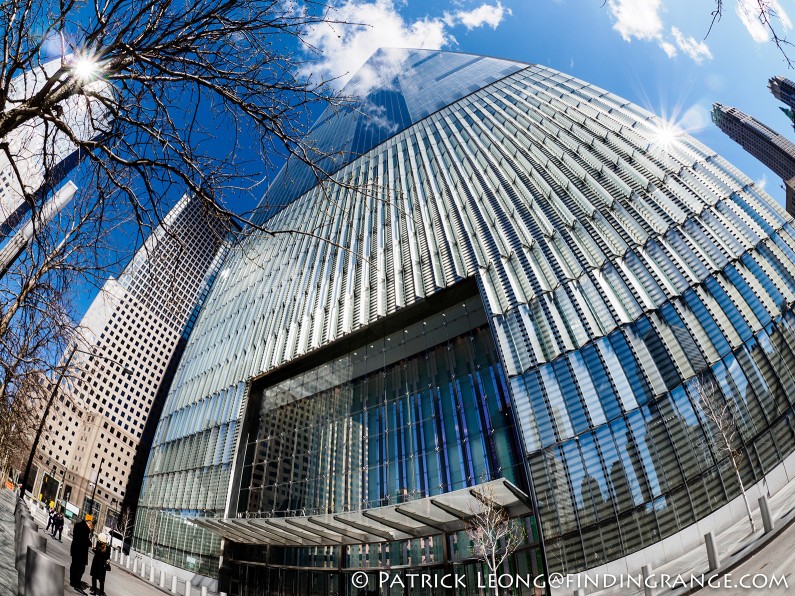
↑ This was taken at F11. Again, check out how incredibly sharp this lens is and how it renders colors.
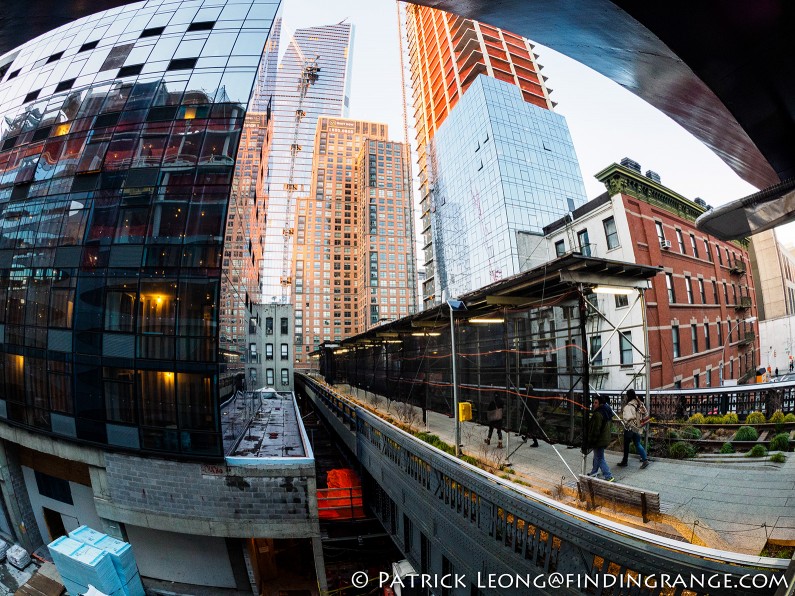
↑ I used to walk on the High Line so much when it was first built. This was taken at F5.6.
Since we’re on the topic of depth of field, let’s discuss further about shooting the Olympus M.ZUIKO 8mm f1.8 Fisheye PRO lens at its maximum aperture. It is absolutely wonderful to have an ultra wide fisheye lens with a maximum aperture of F1.8 but not because of the shallow depth of field or bokeh. Yes, this lens will exhibit bokeh but you have to shoot extremely close to your subject, sometimes uncomfortably close. But that’s perfectly fine because you don’t buy a lens like this for its ability to produce a very shallow depth of field. For me, the F1.8 just makes this lens much more versatile because I can shoot at lower ISO speeds. The beauty is even if I shoot at large apertures, most of my scene is still in focus, which is important to me because when I shoot wide angles, I tend to like most of my scene in focus. You can literally shoot this lens at F1.8, and it’s amazing how much is still in focus.
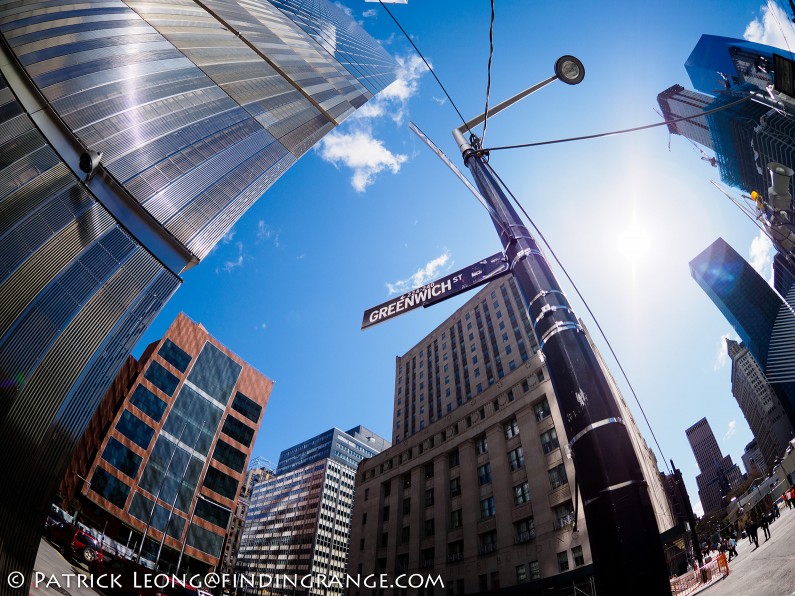
↑ Here is an example taken at F1.8. I wasn’t too far from the sign and as you can see, a lot is still in focus.
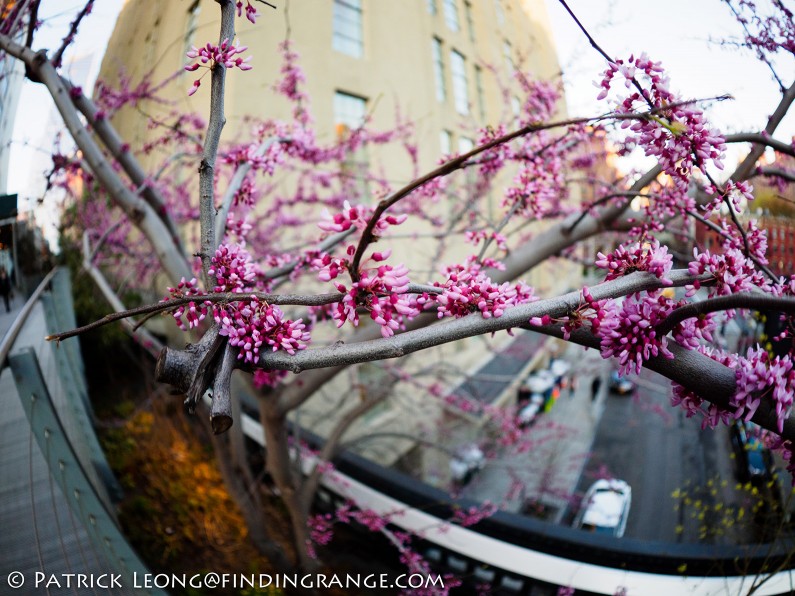
↑ You can produce bokeh if you are extremely close to your subject like I was with this tree. In fact, I was so close that the branch almost touched the front element.
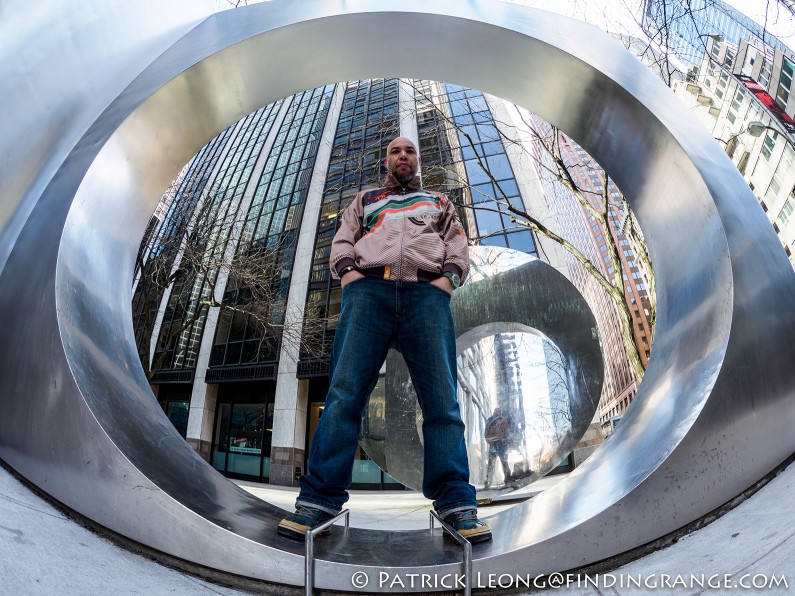
↑ You don’t have to stop down too much to get most of the photo in focused. This was taken at F4.5.
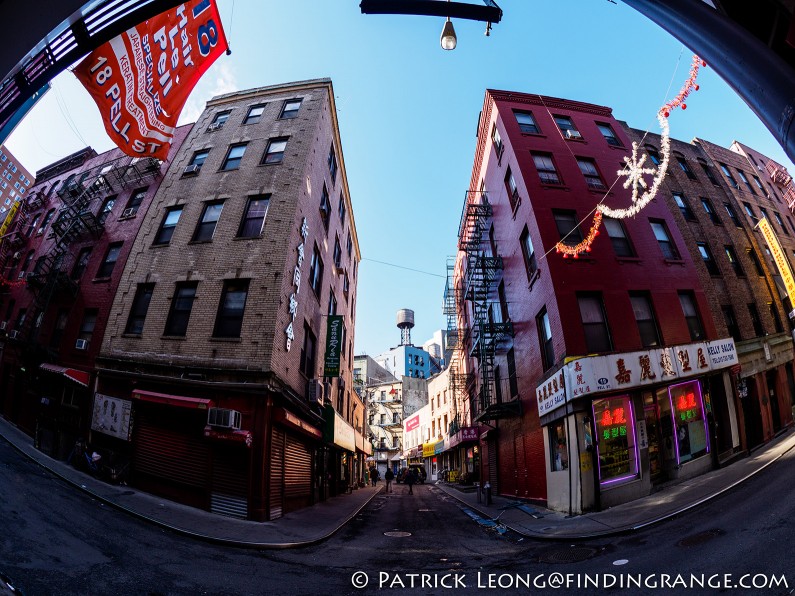
↑ Here is another taken at F4.5.
Olympus M.ZUIKO 8mm f1.8 Fisheye PRO Pros And Cons:
Olympus M.ZUIKO 8mm f1.8 Fisheye PRO Pros:
- Well built.
- Weather sealed.
- Compact for its focal length and maximum aperture speed.
- Fast and accurate autofocus.
- Superb optics.
- Extremely sharp.
- Fast F1.8 maximum aperture.
Olympus M.ZUIKO 8mm f1.8 Fisheye PRO Cons:
- Expensive but still not outrageous in my opinion.
- No filter options.
Olympus M.ZUIKO 8mm f1.8 Fisheye PRO Verdict:
Overall, the Olympus M.ZUIKO 8mm f1.8 is one of the best fisheye lenses that I’ve come across so far. I absolutely loved my time with this lens because it exceeds in so many key areas, and it is so much fun to use. It’s well built, it’s weather sealed, the optics are near perfect, and to top it off, it has a maximum aperture of F1.8. The only thing that I could think of that may stop someone from purchasing this lens is the asking price. Personally, I don’t feel like the asking price of $899 is too expensive for this optic because it really is that good. But then again, I’ve had experience with fisheyes before, and I know I love using them. For someone who is new to fisheyes and just wants to give one a try, it may be a different story.
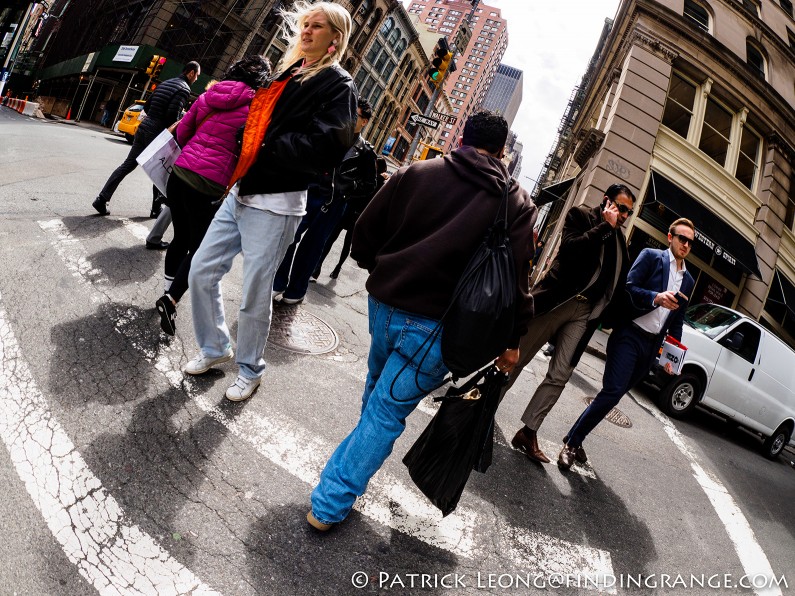
↑ This was taken at F6.3.
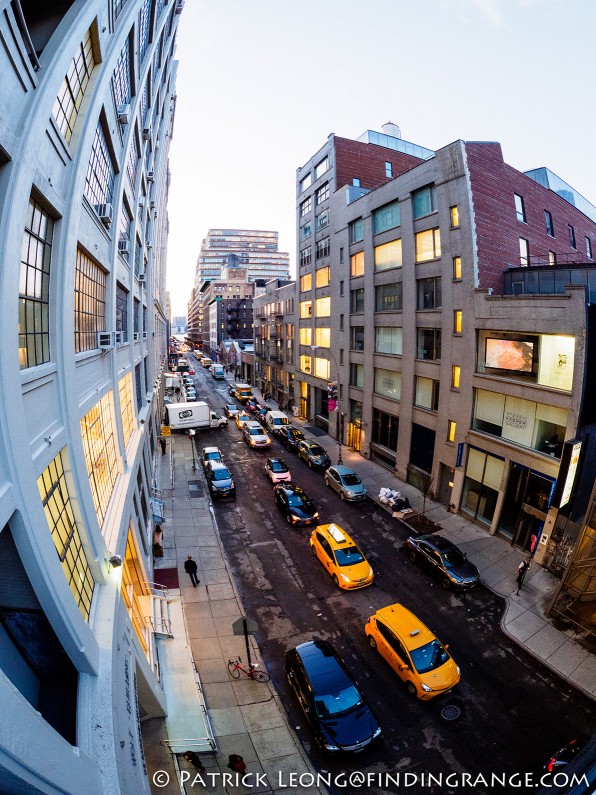
↑ Here is a photo taken at F5.6 using 2000 ISO.
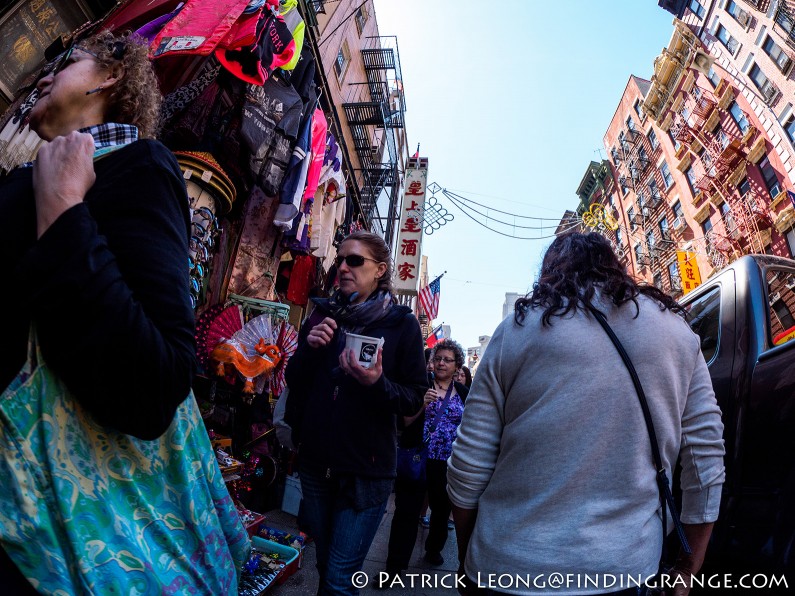
↑ Here is one more taken at F5.6.
↑ Here is an example taken at F11.
But again, if you’re like me, and you want a quality fisheye, this lens is definitely worth it, hands down. Plus, I know there are some that say fisheye lenses are hard to use but as my chemistry professor used to tell me all the time, it just takes patience and persistence. Like everything new, you just have to get used to it. I’ll tell you this: fisheye lenses are probably the most fun lenses to learn and experiment with. You can get some pretty interesting results, some done purposely, and some by mistake ;). Whatever you decide, the bottom line is this: if you want one of the best fisheye lenses that you can get for your micro four thirds system, the Olympus M.ZUIKO 8mm f1.8 Fisheye PRO is definitely a lens that you want on top of your list.
Thanks for taking the time to read my review. If you’re considering purchasing the Olympus M.ZUIKO 8mm f1.8 fisheye, and my review helped you decide, please help support this site by purchasing from the links below or any mentioned in this review. It will not cost you anything extra. Thank you for your support!
Olympus M.ZUIKO 8mm f1.8 Fisheye PRO at B&H Photo
All these photos were taken with the new Olympus Pen-F and can be found at B&H Photo as well.


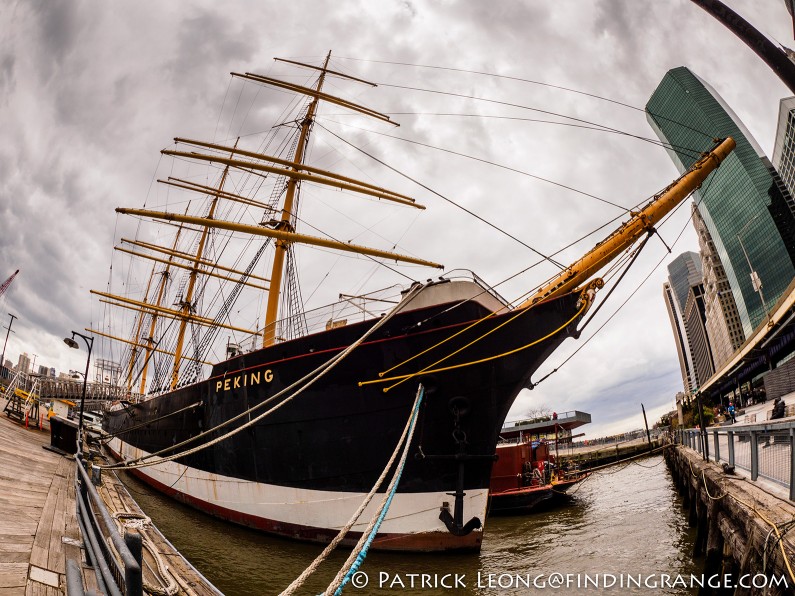
Hi Patrick.. Awesome review on the Olympus 8mm fisheye lens.
I purchased one about 4 months ago. Everything you mentioned
about this lens is absolutely true. Great optics, and pin sharp.
Also build quality is pro grade. Having a great time with this
superb lens. Cheers Mike. All the best.
PS: Keep up your great olympus reviews Patrick, WELL DONE !
Thanks Mike!
I appreciate you taking the time to read it! Good to hear your enjoying it. It is such a great lens. I’ll definitely review more Olympus products soon, and thanks for leaving a comment!
Best,
Patrick